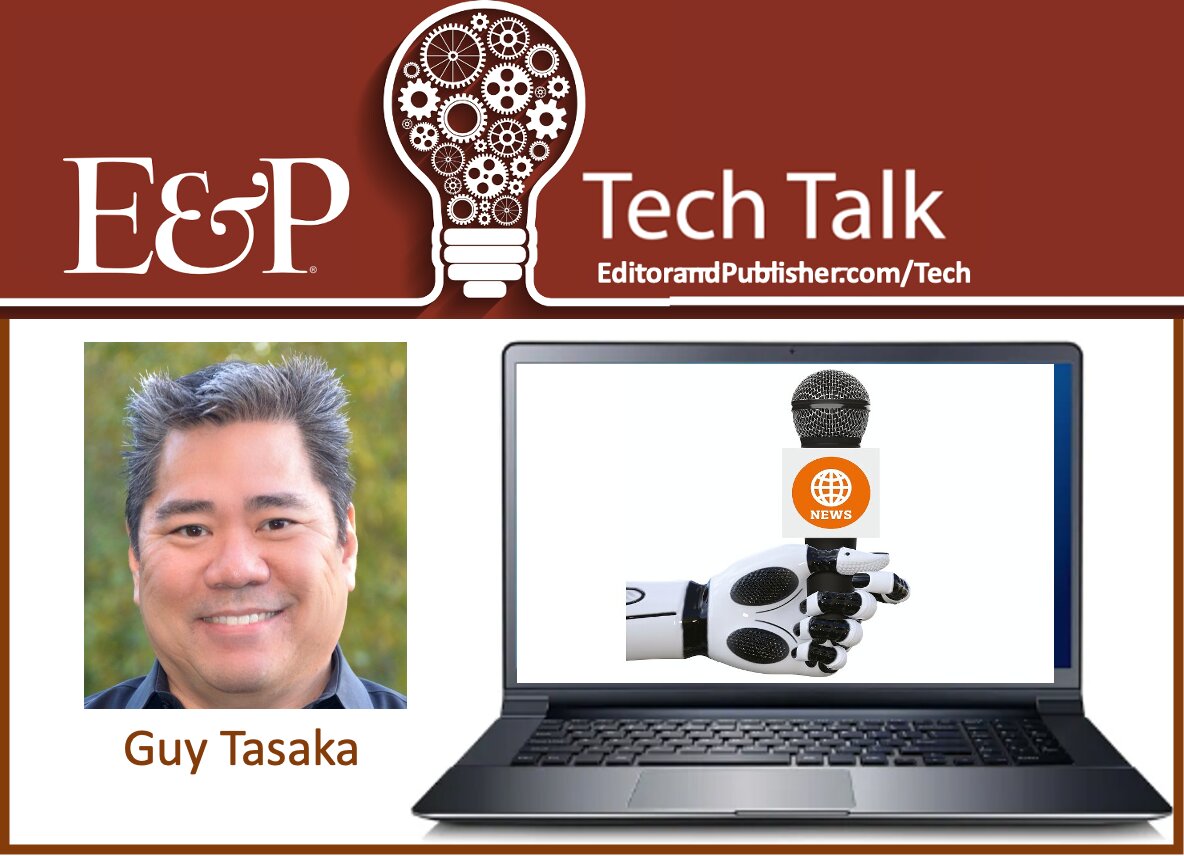
By now, you’ve likely heard incessantly about ChatGPT. With OpenAI’s revolutionary tool nearing its eight-month mark upon this issue's publication, there’s no doubt that generative AI is here to stay. But why should you, as a media executive, also comprehend JAMstack and No-Code/Low-Code (NC/LC) technologies?
JAMstack — modern web architecture
JAMstack represents the modern blueprint for creating cutting-edge websites. Consider its relevance in news media sites where it delivers swift, dynamic sites with routinely updated content. JAM stands for JavaScript, APIs and Markup. JavaScript manages the site’s business logic, whereas markup (HTML and CSS) handles page display. APIs, or application programming interfaces, deliver content from databases or headless CMS.
The actual content, including stories, photos, videos and ads, may come from diverse databases, all powered by APIs. Business logic is processed on the browser in the context of a JAMstack website. APIs are increasingly ubiquitous, with Precedence Research estimating the global API management industry to reach $47 billion by 2030, up from $7 billion in 2023.
Every day, APIs permeate our lives. They power various services, from stock tables and weather updates to Yelp and Waze.
Most media publishers have a lot of “data” about their community. It's likely unstructured, unmanaged and unmonetized. In the new media economy, data is the new gold and management, distribution and monetizing it is a critical part of the future.
No-Code/Low-Code
No-Code/Low-Code (NC/LC) has gained substantial traction over the past decade, especially during the pandemic. Originally designed to aid IT departments in creating user-friendly interfaces, it has evolved into a tool for entrepreneurs to build prototypes and launch startups. Platforms such as Bubble, Webflow, Flutterflow and Adalo now underpin numerous live startups.
Homads.com’s CEO, Vi Nguyen, shifted her SaaS company onto Bubble, an NC/LC platform, for cost-efficiency and speed. NC/LC speeds up development by roughly five times.
NC/LC democratizes web app and SaaS creation, making it accessible to anyone with basic computer skills. You can swiftly build public-facing products like self-service ad portals, mobile apps, community content submission tools and order management interfaces. The technology eliminates difficult and expensive overheads like hosting and separate frontend and backend development. Since most NC/LC is developed in pseudo-code, it addresses the need for detailed documentation.
In last month’s column, I discussed the democratization of local media and the fading boundaries. While some argue that technology hinders the local media industry, my view is that it’s more about workflow. NC/LC allows for the easy creation of public-facing products like self-service ad portals, mobile apps and community content submission tools, all powered by APIs. Workflows can be optimized using NC/LC.
Harnessing OpenAI
ChatGPT, generative AI or OpenAI, as you may refer to it, utilizes APIs extensively. Since its release, we’ve seen hundreds, if not thousands, of tools claiming to utilize AI. Several platforms on the market provide generative AI solutions, such as Google, Meta and Nvidia, in addition to several open-source platforms. These AI platforms generate responses based on prompts sent through APIs.
These tools are based on Large Language Models (LLMs) trained on known datasets. For instance, OpenAI uses about 350 billion words scraped from the internet until September 2021. Its responses are confined to knowledge predating this cutoff. OpenAI’s memory limit is also notable. For instance, GPT4 has a “memory” of 32k tokens, or 25,000 words, a significant leap from GPT3’s 4k tokens.
If you desire to customize ChatGPT to reflect your writing styles or archive data, tools like Langchain can aid in the parsing, storing and provisioning of your data to large language models (LLMs), enabling customized responses.
This reiterates the significance of structured data. Such data can facilitate your content distribution across diverse platforms and enable its accessibility for LLMs, fueling the creation of tools beneficial to both the newsroom and the end consumers.
Why pay attention to these three technologies? As a news media executive, comprehending the API economy and its influence on data usage and ownership is crucial. With the advent of new AI models, having readily accessible datasets can expedite the development of groundbreaking tools and business models.
As we stand in June 2023, the trajectory of AI’s future remains an open question. It could face restrictions, controls or widespread acceptance. One certainty, however, is that AI models’ performance relies heavily on the quality of their training datasets. Hence, maintaining structured, pristine and easily reachable data becomes pivotal.
How can you orchestrate all this without a specialized team of developers and data scientists? No-Code/Low-Code (NC/LC) comes with a host of integrations with OpenAI, data scraping and other integration tools. Robotic Process Automation or RPA services like Zapier offer automation capabilities to transfer data across various systems. Look at JAMstack, No-Code/Low-Code and OpenAI as essential components for building a solid infrastructure that propels your business forward. But always remember that just because you can build something does not necessarily mean you should.
Guy Tasaka is a seasoned media professional with a 35-year track record of leading change in the industry. He has collaborated with renowned organizations such as Macworld Magazine, Ziff-Davis and The New York Times, where he honed his expertise in research, strategy, marketing and product management. As the former chief digital officer at Calkins Media, Guy was acknowledged as the Local Media Association's Innovator of the Year for his work in advancing OTT and digital video platforms for local news organizations. He is also the founder and managing partner of Tasaka Digital, specializing in helping media and technology companies navigate business transformations using his extensive experience and forward-thinking approach. Guy can be reached at guy@tasakadigital.com.
Comments
No comments on this item Please log in to comment by clicking here